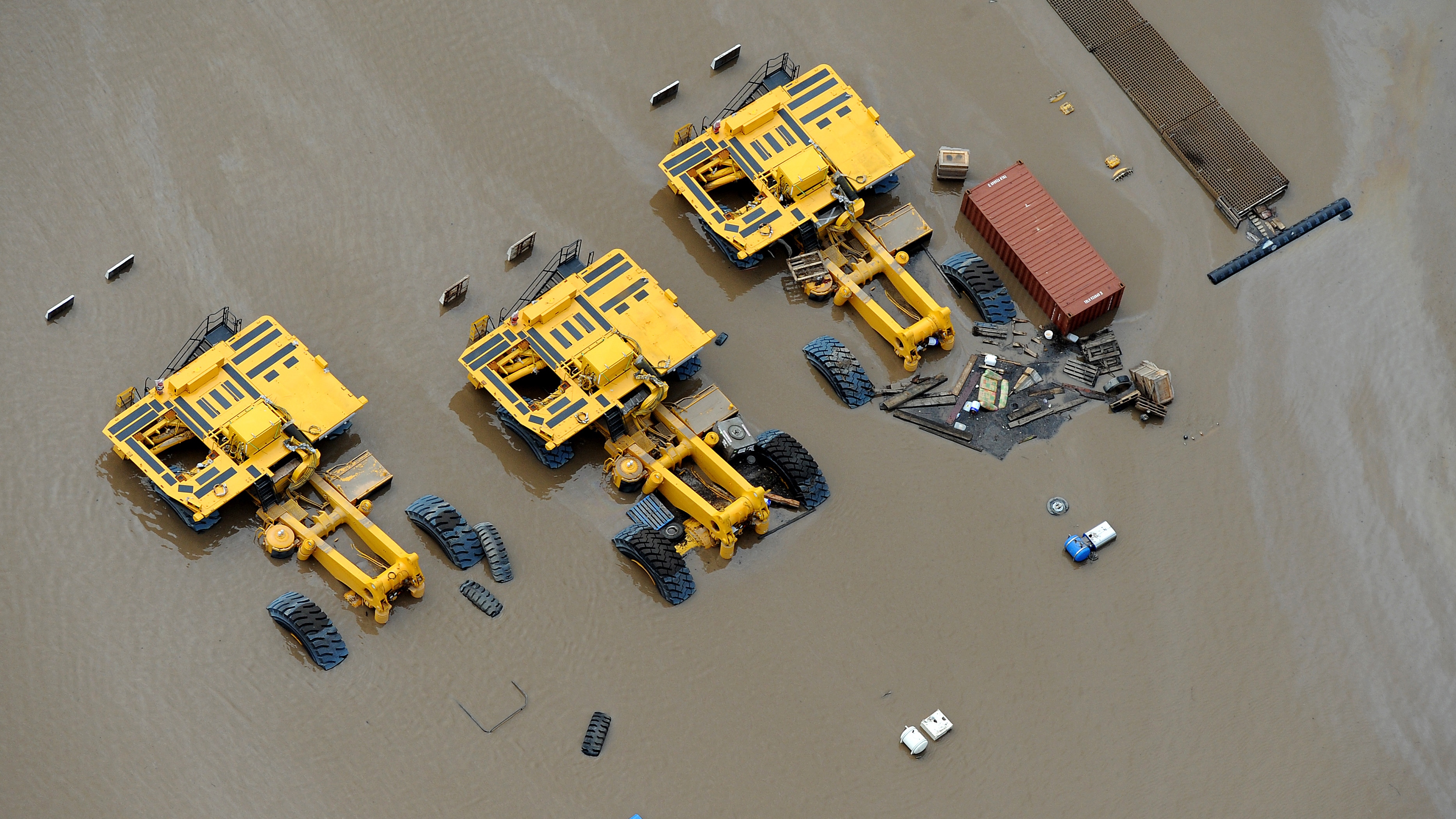
Australia and New Zealand have been hit hard by natural catastrophes in recent years: floods, cyclones, hailstorms, bushfires and earthquakes. The consequences are among the worst in the world, and the risks associated with them are changing fast.
Having been in the region for nearly 50 years, Munich Re supports its clients here through tailored risk transfer and capital management solutions, as well as financial protection against exceptional levels of damage and loss caused by natural disasters. We use our deep technical expertise to measure, manage and mitigate risks and help efforts to build greater resilience across cities and local communities in the face of unexpected events.
How much can Australia's economy withstand?
Major natural catastrophes are a heavy burden even to successful economies like Australia’s. Data from 2017 indicates that 97% of disaster funding is spent on post-disaster relief and recovery, with only 3% is invested in mitigating a disaster before it happens. Is Australia prepared for the potential risks of climate change?
Read more:
How much can Australia’s economy withstand? (2019)

Australia faced with climate change
Man-made climate change, coupled with exposure development, will significantly alter the insurance industry's risk maps of Australia and New Zealand over the coming decades.
While the effects of climate change are still emerging, the question arises as to what we – both insurers and society – need to do to be ready for the future. Below is a brief summary of the current and projected situation for the region:
- Changes in severe thunderstorms
- More intense tropical cyclones
- Circulation changes and less rainfall over southern Australia
- Decrease in total rainfall
- Changes in flood hazard
- More extreme drought events in Australia
- Growing bushfire hazards in Australia
Read more on the effects of climate change in Australia, Oceania and New Zealand:
Australia and Climate Change (2019)
Severe convective storms and hail - Icy cricket balls from above
Losses from severe convective storms, in particular from hail, represent the most frequent and (on an annual aggregate basis) the highest losses for the insurance industry in the entire Australian natcat business. Seven of the ten most expensive (inflation-adjusted) insured convective storm losses in Australia have occurred within the last 10 years.
Over the last 39 years, the accumulated losses (all in Australian CPI-adjusted values for 2018) from severe convective storms total around A$ 20.5bn for insured losses and A$ 33.6bn for direct economic losses. Compared to other perils in Australia, only losses from flood events reach similar dimensions. In terms of frequency, losses from severe convective storms make up about 50% of all loss-producing natural hazard events that occur in Australia.
Read more:
Icy cricket balls from above (2019)

Floods in Australia – Never underestimate troubled water
Flood is probably the natural peril Australia is most aware of. Major floods frequently isolate towns, create major disruptions to road and rail links, and can cause death. Widespread damage to houses and business premises as well as losses in agriculture are common. Practically every year there are flood losses, sometimes with devastating consequences.
Despite regular loss events, the consequences of flooding are still often underestimated – both in Australia and around the world.
Read more:
Never underestimate troubled water (2015)

Cyclones in Australia - Turbulence on the Gold Coast
Severe cyclones in Australia rarely reach the east coast of southern Queensland - the last time was in the 1970s. However, current climate change predictions and increasing concentrations of values are making risk researchers sit up and take notice, because should a storm event occur, the consequences could be devastating.
Read more:
Turbulence on the Gold Coast (2015)

Bushfires – Australia on fire
In southeast Australia in recent decades, bushfire has been the second biggest cause of insured property loss from natural hazards after severe thunderstorms. Victoria is the most exposed state, but the risk is also high in other regions like the suburbs of Sydney in New South Wales.
Bushfires are an intrinsic part of the natural ecology of the Australian landscape. The eucalyptus – the archetypal Australian plant – is particularly fire prone on account of its high oil content. In the southern part of the country, the dry months in summer are the most dangerous time, especially after rain has increased vegetation growth in the preceding winter. Unfortunately, the region most prone to major bushfires, southeast Australia, also has the highest concentration of people and insured values.
Read more
Australia on fire (2015)

Earthquakes in Australia – Expect a Big One
Earthquakes in Australia are infrequent and mostly moderate in size. At first glance, this appears to be a much more comfortable situation than in New Zealand, Japan or the United States. However, on closer examination the picture looks different: earthquakes in Australia could cause insured losses in the same order of magnitude as in the highest-exposed regions worldwide.
Australia is not known to be an earthquake hotspot – but neither was Christchurch in New Zealand. As it turned out, in Christchurch in 2010/2011 an unexpected series of severe earthquakes with a magnitude of up to 7.1 surprised even the experts and destroyed large parts of the city – it was one of the most expensive insured natural catastrophes in history.
Read more:
Expect a Big One (2015)

New Zealand volcanoes: Sleeping giants underneath
With the exception of extremely rare major meteorite impacts, no other natural events in New Zealand can devastate such large areas with the intensity and suddenness of volcanic eruptions. Their direct effects: lava, mudflows and pyroclastic flows, ash clouds and ash deposits. The indirect effect: climate impact. The losses: besides the direct losses, disruption of air transport and shipping and crop losses.
Read more:
Sleeping giants underneath (2015)

Stand by your country – together for more disaster resilience in Australia
Recognising that governments acting alone cannot address the challenge of natural disaster management, the Australian Business Roundtable aims to support the development of a more sustainable, coordinated national approach to making communities more resilient and the Australian people safer. Munich Re is among the founding members.
The Australian Business Roundtable for Disaster Resilience & Safer Communities (ABR) was formed in December 2012 by the Chief Executive Officers of the Australian Red Cross, Insurance Australia Group, Investa Property Group, Munich Re, Optus and Westpac Group. The CEOs created the Roundtable because they all consider having resilient communities that can adapt to extreme weather events to be of national importance. This is the first time such a broad spectrum of organisations has come together to champion this issue.
Downloads
Munich Re Experts
/Hawkins_Scott_BJM0691_1x1.jpg/_jcr_content/renditions/original.image_file.120.120.file/Hawkins_Scott_BJM0691_1x1.jpg)
/Gottardo_Chris.jpg/_jcr_content/renditions/original./Gottardo_Chris.jpg)
Related Topics
Newsletter
properties.trackTitle
properties.trackSubtitle






